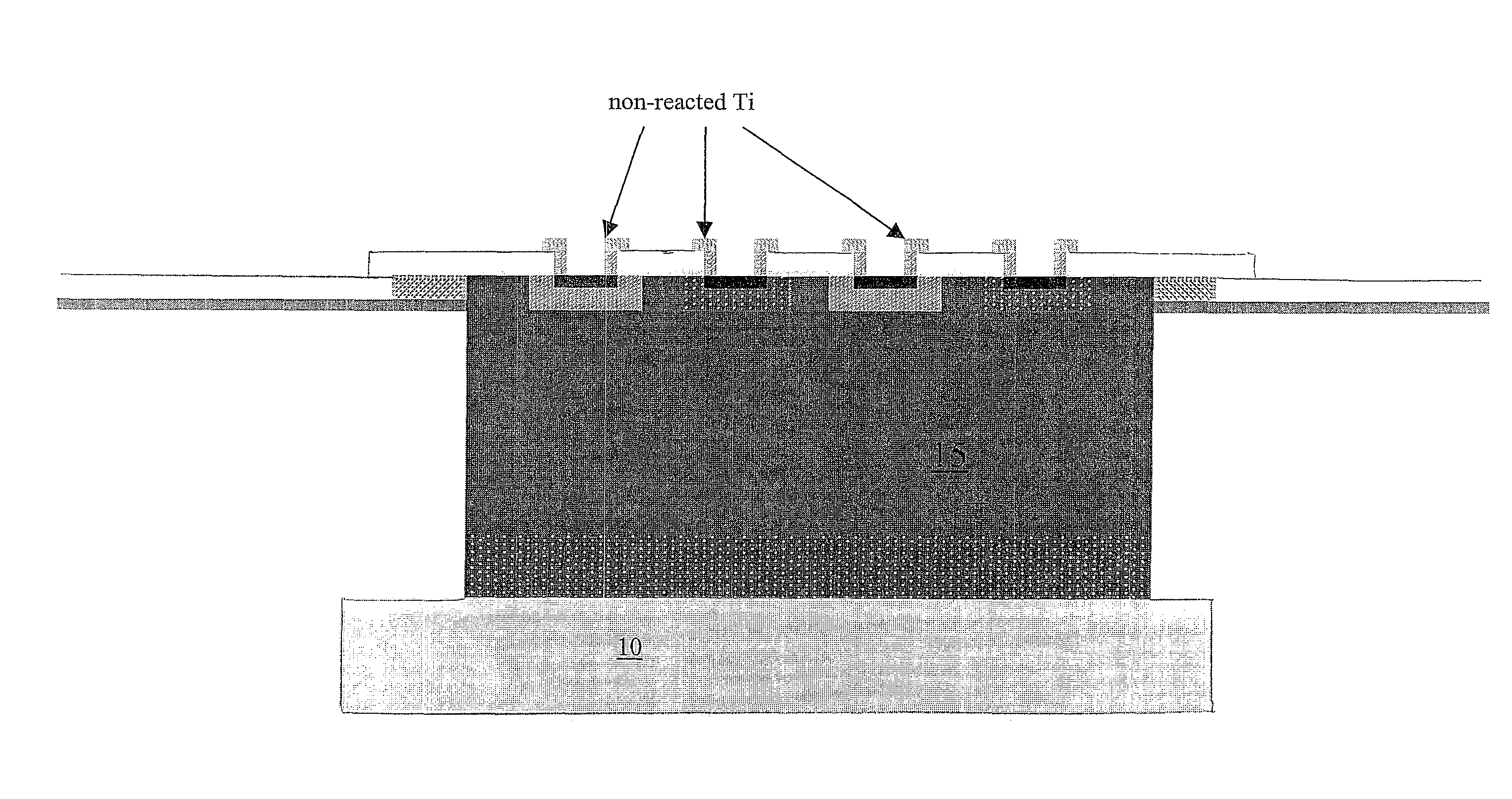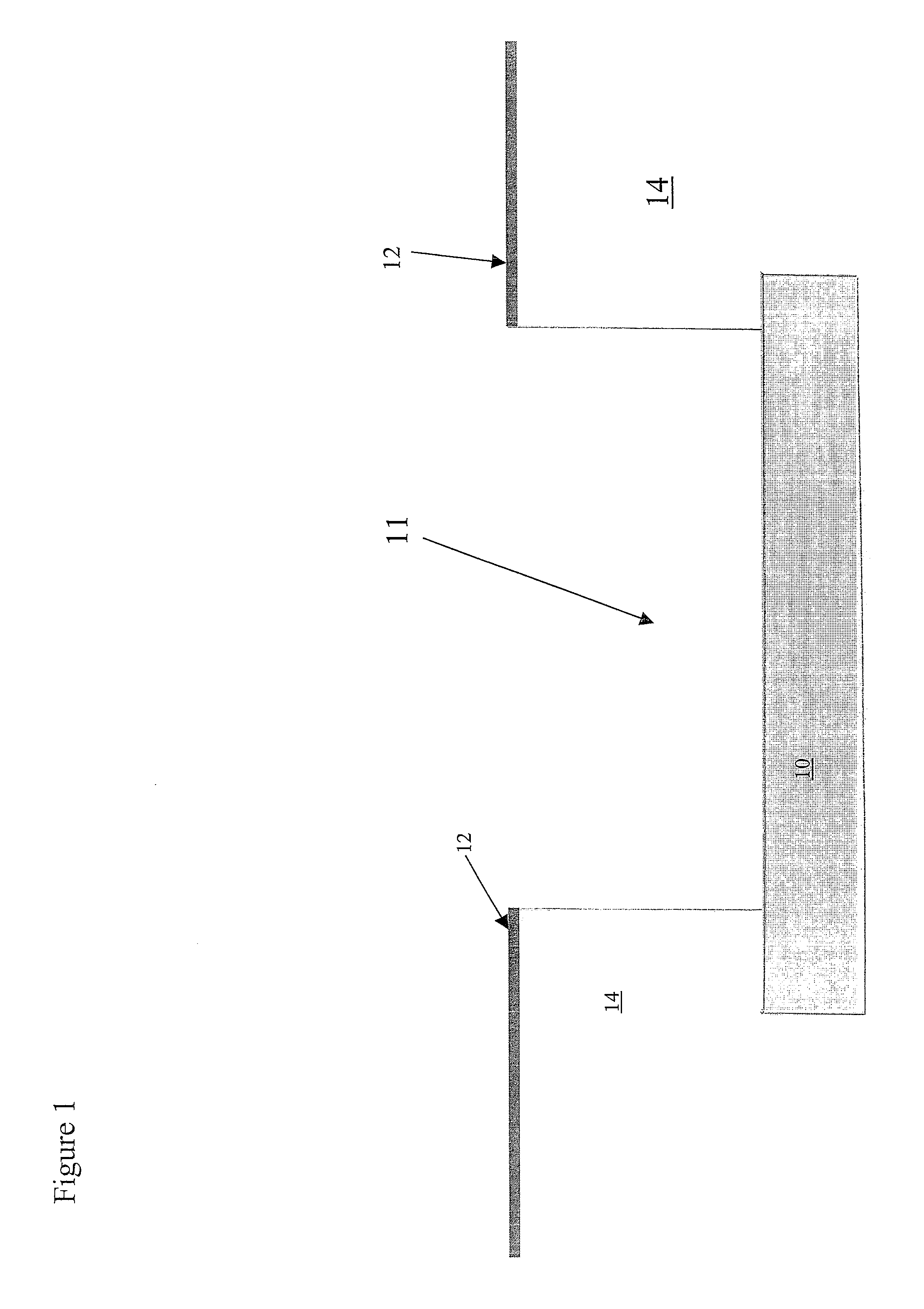Method for manufacturing lateral germanium detectors
a germanium detector and manufacturing method technology, applied in the field of optical detectors, can solve the problems of limiting the application of such devices in the telecommunications industry, reducing the performance of devices, and high cost of silicon surface integration
- Summary
- Abstract
- Description
- Claims
- Application Information
AI Technical Summary
Benefits of technology
Problems solved by technology
Method used
Image
Examples
Embodiment Construction
[0014]Referring now to the drawings and in particular to FIGS. 1-9, there are illustrated successive steps of a method for fabricating a lateral germanium-based detector, in accordance with a preferred embodiment of the present invention. Initially, a dry etch process is utilized to open a detector window 11 through a nitride layer 12 (˜250 Å) and an oxide layer 14 (˜6,000 Å) to expose a single crystalline silicon layer 10 situated on an insulator substrate, as shown in FIG. 1.
[0015]A single crystal germanium layer 15 is then grown within detector window 11, as depicted in FIG. 2. Four different gases are used for the growth of single crystal germanium layer 15, namely, hydrogen, 100% silane (SiH4), 100% germane (GeH4), and 100% diborane (B2H6). The germanium growth process uses silicon and silicon-germanium seed layers to create an abrupt transition from the underlying single crystal silicon surface and the single crystal germanium growth. The usage of the seed layers allows for a ...
PUM
 Login to View More
Login to View More Abstract
Description
Claims
Application Information
 Login to View More
Login to View More - R&D
- Intellectual Property
- Life Sciences
- Materials
- Tech Scout
- Unparalleled Data Quality
- Higher Quality Content
- 60% Fewer Hallucinations
Browse by: Latest US Patents, China's latest patents, Technical Efficacy Thesaurus, Application Domain, Technology Topic, Popular Technical Reports.
© 2025 PatSnap. All rights reserved.Legal|Privacy policy|Modern Slavery Act Transparency Statement|Sitemap|About US| Contact US: help@patsnap.com



